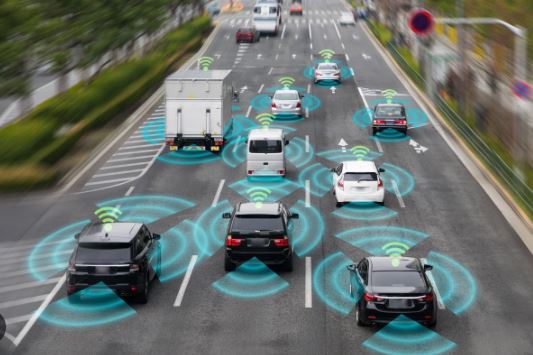The automotive industry is undergoing a profound transformation with the rise of connected cars. These vehicles, equipped with advanced technologies and Internet of Things (IoT) capabilities, offer unprecedented convenience and efficiency. However, as cars become more connected, they also become susceptible to cybersecurity threats that can compromise not only personal data but also the safety of drivers and passengers. In this article, we delve into the cybersecurity challenges associated with connected cars and explore the measures being taken to secure the future of automotive technology.
I. The Growing Connectivity in Modern Vehicles
Connected cars are no longer a futuristic concept; they are a reality on our roads today. With features such as in-car Wi-Fi, GPS navigation, and integration with smartphones, vehicles have evolved into sophisticated computing devices. While these advancements enhance the driving experience, they also open the door to a range of cybersecurity challenges.
II. Vulnerabilities in Connected Car Systems
a. **Hacking and Remote Exploitation:**
Connected cars rely on complex networks of sensors, control units, and communication protocols. Hackers can exploit vulnerabilities in these systems to gain unauthorized access, manipulate critical functions, or even take control of the vehicle remotely. This poses serious safety concerns for drivers and passengers.
b. **Data Privacy Concerns:**
As cars collect and transmit vast amounts of data, including location information, driver behavior, and vehicle diagnostics, there is a growing risk of unauthorized access to this sensitive data. Protecting the privacy of car owners and ensuring secure data transmission are paramount challenges for the automotive industry.
III. Real-world Examples of Cybersecurity Incidents
To illustrate the severity of cybersecurity challenges in connected cars, we can look at real-world examples. Instances of unauthorized access, data breaches, and remote manipulation have been reported, highlighting the urgent need for robust cybersecurity measures.
IV. The Role of Artificial Intelligence in Automotive Cybersecurity
As cybersecurity threats become more sophisticated, the automotive industry is increasingly turning to artificial intelligence (AI) to bolster defenses. AI algorithms can analyze patterns of behavior, detect anomalies, and respond to potential threats in real-time. This proactive approach is crucial in staying one step ahead of cybercriminals.
V. Collaborative Efforts to Enhance Cybersecurity
a. **Automaker Initiatives:**
Major automakers are investing heavily in research and development to strengthen the cybersecurity defenses of connected cars. This includes implementing secure communication protocols, regularly updating software, and conducting thorough security audits.
b. **Industry Standards and Regulations:**
Governments and regulatory bodies are playing a crucial role in setting cybersecurity standards for the automotive industry. Compliance with these standards ensures that automakers prioritize cybersecurity in the design and manufacturing of connected vehicles.
VI. Challenges in Implementing Cybersecurity Measures
Despite the ongoing efforts to enhance cybersecurity in connected cars, several challenges persist. These challenges include the rapid evolution of cyber threats, the need for standardized security measures across the industry, and the balance between security and user convenience.
VII. Junk Cars Collection Sydney: A Local Approach to Sustainable Automotive Practices
In the heart of Sydney, a concerted effort is underway to address environmental concerns and promote sustainable automotive practices through the collection of junk cars. Junk Cars Collection Sydney is a local initiative that aims to responsibly dispose of end-of-life vehicles, contributing to a cleaner and greener urban landscape.
The process involves the careful dismantling and recycling of materials from these junk cars, reducing the environmental impact associated with traditional disposal methods. Through partnerships with local scrapyards and recycling facilities, Junk Cars Collection Sydney ensures that each component of the vehicle is handled responsibly, from fluids to metals.
Whether you have an old, non-functioning vehicle taking up space in your garage or a salvage car that has reached the end of its road, Broken car removal Sydney provides a convenient and eco-friendly solution. By choosing this service, individuals contribute to the reduction of automotive waste and the promotion of sustainable practices within the community.
VIII. The Future of Connected Car Cybersecurity
a. **Blockchain Technology in Automotive Security:**
The adoption of blockchain technology is emerging as a potential game-changer in automotive cybersecurity. By creating decentralized and tamper-resistant ledgers, blockchain can enhance the integrity and security of data in connected cars.
b. **Continuous Monitoring and Updates:**
As cybersecurity is an ever-evolving field, continuous monitoring and prompt software updates are crucial. Automakers must establish mechanisms to deliver timely security patches and updates to connected vehicles to address emerging threats.
c. **Education and Awareness:**
Building awareness among consumers about cybersecurity risks and best practices is essential. Educated users are more likely to follow security guidelines and report any suspicious activities, contributing to a safer automotive ecosystem.
IX. Conclusion
Connected cars are at the forefront of automotive innovation, but their widespread adoption brings forth significant cybersecurity challenges. As the industry navigates this complex landscape, collaborative efforts, technological advancements, and a commitment to cybersecurity best practices will determine the safety and success of connected vehicles on our roads.
In conclusion, as we embrace the era of connected cars, it is imperative to address cybersecurity challenges head-on. By doing so, we can ensure that the future of automotive technology remains not only innovative and efficient but also secure and resilient.

